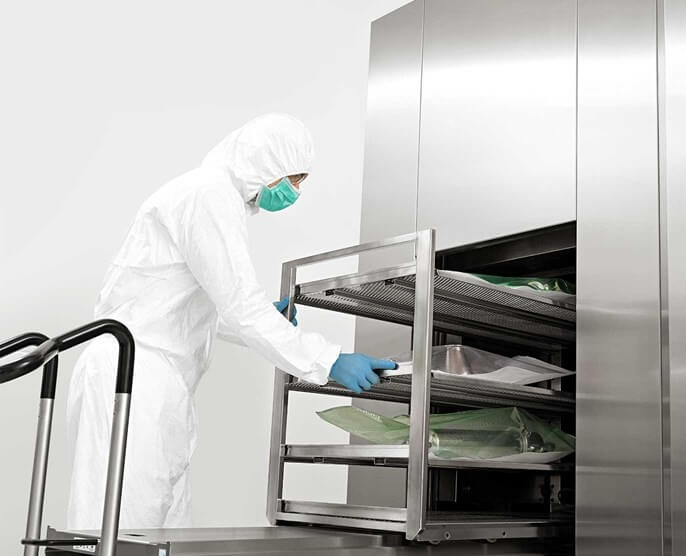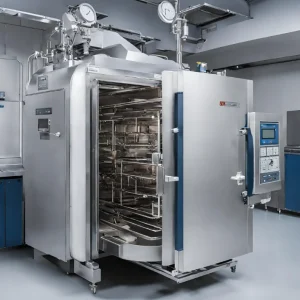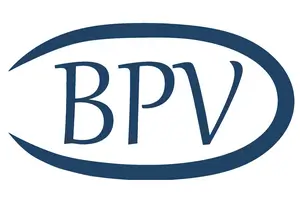
Key Considerations for Autoclave Load Positioning, Arrangement, and Qualification Impact
Autoclaves have been in use since the sixteenth century. Steam pressure cooking was first developed in 1679 by French engineer Denis Papin. The germ theory was supported in the 1860s by French biologist Louis Pasteur (1822–1955). The first pressure steam steriliser, or modern autoclave, was created in 1876 by Charles Chamberland, one of Pasteur’s partners. German surgeon Ernst von Bergmann was the first to sterilise surgical instruments with steam in 1885, and that was the first description of the load being sterilised by the autoclave. Currently, the arrangement, placement, and distribution of materials or items inside an autoclave are key and can affect its operational efficiency, effectiveness, and outcomes.
This article investigates how different ways of arranging items within the autoclave can influence factors such as heat distribution, steam penetration, sterilisation exposure time, and overall process performance. The goal is to optimise the load configuration to achieve the most robust sterilisation process.
The article is divided into three key sections: load type considerations such as solid materials, liquids and wrapped goods; positioning factors including arrangement for steam flow; and approaches to validating fixed versus variable loading to balance validation effort with operational flexibility. Each section explores the main factors that enable robust and repeatable sterilisation cycles.
Along with the autoclave design, other factors that affect temperature distribution include the shape, mass, density, and material of the item. As well as aspects such as the loading of the autoclave how many items are sterilised at once & how they are placed inside the autoclave, the thermal properties of the items, and the reactive properties of the material makeup of the load.
Load type considerations:
1. Type of the load:
The type of load can have a major impact on the autoclave cycle and associated considerations. The main types of load are porous & solid materials and Liquids, which are detailed below:
Porous and Solid Materials
Examples of porous or solid materials which can be autoclaved include wrapped or bagged items, scissors, forceps, air sampler heads, filters, tank & vessels, closed-valved containers, empty glass bottles with screw-on caps, aluminium foil that has been secured, large-diameter piping and clear glassware.
Attention must be paid to the complexity of items and their ability to clear condensate and allow free flow of steam ingress and air removal. Considering these factors will allow proper development of cycles based on the complexity of the items. fewer vacuum pulses may be required to achieve the same level of air removal with simplistic items compared to complex items with a greater number of vacuum pulses.
It is also important to pay attention to items which may be sealed as closure of lids or vent valves may result in sealed containers being insufficiently sterilised due to the steam being unable to condense on the interior surfaces of the containers. Care must be taken to ensure load items are dry upon completion of the cycle as water droplets can assist microbial growth beyond cycle completion.
Liquids
Liquid loads can include culture media, buffer solutions, water for injection and bulk drug substance solutions. Due to the nature of container integrity and product sensitivity, some of these liquids cannot typically be subjected to a vacuum because the contents may be compromised as a result of the vacuum stage. Instead, autoclave cycles for liquids typically rely upon gravity displacement. The air is displaced by steam that is introduced into the chamber’s top. The air is forced out through the active chamber discharge by gravity after being displaced by steam in the chamber.
To prevent liquid loss from boiling over, modified gravity cycles are needed. A “basic” liquid cycle (with slow exhaust) can be used to process liquids in open or vented containers or bottles with loose caps. The chamber can gradually return to atmospheric pressure Following the cooling (exhaust) phase of this cycle, preventing boil-over.
The duration of the slow exhaust phase can vary significantly depending on the volume of liquid in each container and each load. Slower exhaust rates are necessary for larger volumes.
Load probes are necessary for these cycles for both confirmation of reliable sterilisation and safety purposes.
2. Positioning:
Positioning, and the shape and thickness of the item (i.e., how many parts are being sterilised simultaneously and how they are arranged inside the autoclave) all affect temperature distribution in addition to the autoclave’s design.
Arranging the items in a way that allows for efficient steam penetration and circulation is significant. Wrapped goods should not be tightly packed, as this can significantly impede the effectivity of the sterilisation process. To mitigate this, racks or hangers may be used to position items correctly to encourage air removal and steam penetration. Though in some cases, removing a shelf from the chamber will allow for more efficient sterilisation conditions.

It is necessary to place wrapped goods in a way that enables the condensate to flow downward. As previously mentioned, wrapped goods that are still wet at the end of the cycle cannot prevent contamination of the load when removed from the steriliser.
To reduce the likelihood of condensation being present on load items, it is a sensible approach to load items of greater density at lower positions in the chamber than items of lower density of the same load.
It is advised not to overfill the autoclave. Overfilling the autoclave significantly impedes the flow of steam and may make sterilisation ineffective because steam cannot properly circulate around the load. The risk of compromised sterilisation is highly likely with overfilled autoclaves.
3. Variable load configuration in relation to validated cycles
It is important to consider whether fixed load or variable load configurations should be used. There is a compromise between validation effort and operational flexibility in this situation because it is necessary to validate minimum and maximum cycle variants to enable autoclave loading flexibility.
Typical load cycle approaches to consider validating are listed below:
Fixed Load:
A fixed load/fixed position configuration may be used if flexibility is not required in load quantities, or if incredibly consistent sterilisation profiles are required. In this case, the components are placed inside the chamber in precisely the same manner every time.
Min/Max Load:
A Min/Max Load configuration may be used whereby flexibility is required in load quantities and where minor differences between sterilisation profiles are unlikely to compromise the sterility or integrity of the items being sterilised.
Whilst a Min/Max load offers flexibility on load quantities, the maximum number of each unique item must not be exceeded in the load and positions must not be deviated from.
The maximum load represents the most items that may be sterilised in the autoclave for that particular load design whilst still being able to sterilise in a robust and repeatable manner.
On the other hand, the minimum load for a porous load is the single load item that poses the greatest challenge to air removal when sterilised alone. For a liquids load consideration must be given to the potential of product deterioration when sterilised alone. A full assessment should be carried out to determine the greatest risk and proof obtained demonstrating sterilisation performance is increased with reduced quantities.
Whether the load be Fixed, or Min/Max, triplicate testing is required to demonstrate consistency and repeatability. This should be carried at the extremities of each loading configuration. As a result of this, Fixed load configurations require the fewest qualification runs, but hinder flexibility during operational use.
Standard Operating Procedures (SOPs) should include a diagram of the load configuration so that employees can duplicate the load for each cycle.
Validation of Item Configurations
The number of potential test locations within items appears to be close to infinite with a large load made up of many kinds of items. A concern with expensive items is that it can be challenging to insert the thermocouple and indicators (BI and CI) without impairing the item’s ability to be sterilised or damaging it. Each item must be evaluated separately to determine the best course of action for challenging it. It is frequently necessary to seal the object in some way to return it to a state where it represents parity in terms of steam penetration.
A thermocouple, chemical, and/or biological indicator can be placed inside the item in the autoclave to make sure that it returns reliable sterilisation conditions, if there is any doubt about how an item is configured, set up, packaged, or oriented.
A suitable assessment of each item should be carried out to determine the correct approach to determining worst-case locations. The importance of development is often overlooked and can sometimes lead to expensive issues further down the line, whether it be deviations identified during requalification, product recalls or even life-threatening events as a result of incorrectly identified worst-case locations.
References
Mike Finger, D. D. (2007, 11 14). Steam Sterilization and the 2007. Retrieved from https://www.pda.org/docs/default-source/website-document-library/chapters/presentations/new-england/steam-sterilization-and-the-2007-revision-of-pda-technical-report-1.pdf?sfvrsn=6
Sterilizing Practices. (2008). Retrieved from CDC Centers for Disease Control and Prevention: https://www.cdc.gov/infectioncontrol/guidelines/disinfection/sterilization/sterilizing-practices.html
WB, H. (1991). A brief history of heat and chemical preservation and disinfection. Journal of Applied Bacteriology. , 71 (1): 9–18.
White Paper Autoclave Validation. (2016, 02). Retrieved from White paper: Top 10 considerations when: https://www.pharmout.net/downloads/white-paper-autoclave-validation.pdf
